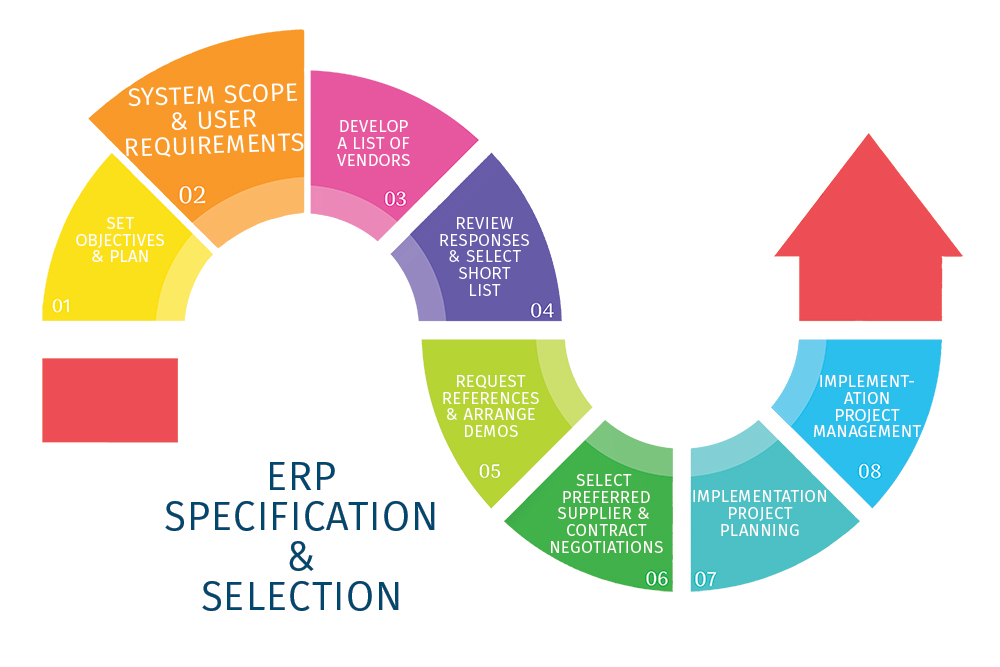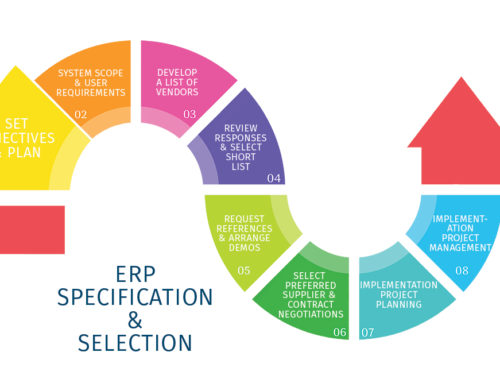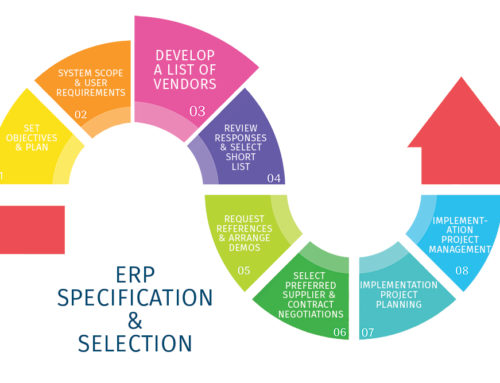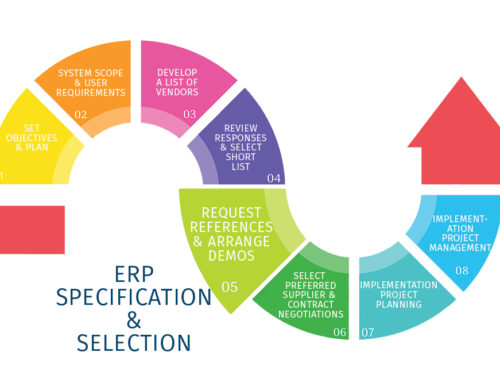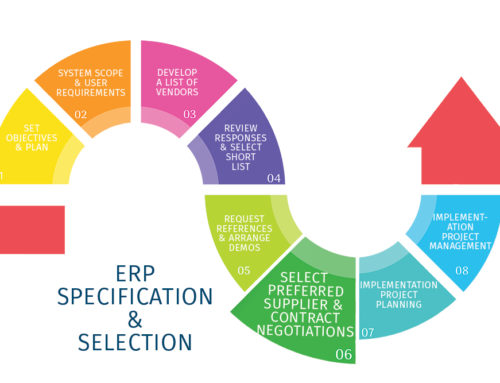Scoping
Scoping a system correctly is vital to the success of the project.
I have often been retained to help in a specification and selection where the project is influenced, if not driven, by the finance department.
Very early systems were of course accounting systems and were the only computerised applications in the business. The finance department owned them and no one else got a look in!
One of my first projects started with an invitation by the Finance Director of a world famous fine worsted weaving company to help him to select a replacement for their ageing accounts system.
He agreed that I should spend a week understanding the business and its processes so that I could identify the type of system required and what the priorities were. What I discovered was misguided methods being applied to the purchase of raw materials. These were leading to inefficiencies and losses but disguised by very high selling prices of the finished product. They needed a new accounting system but that was clearly not the priority and they did eventually agree and the emphasis turned to Inventory and Material Requirements Planning (MRP) along with re-engineered purchasing practices. Part way through the project decisions at group level exposed the impact of years of these practices and vindicated my findings. That is too long a story to include here but it proved to be a lesson in challenging established practices.
The Specification Process
Consider the objectives you set in stage 1 and determine what functionality you need in a system to achieve these. This needs to be done at detail level.
The most important contributors to the statement of requirements are the users themselves.
This needs a team of people who collectively know what the business processes are and what systems and records they have to allow them to do their job. In most companies I have found that there is always a group of around half a dozen users who fit the bill. It is of course inevitable that these people are critical to the business and are always busy! This needs commitment from the top to ensure that sufficient time is allocated to the task.
However if they are left to their own devices, they will simply repeat what they already have so there is no value if I simply write down what they ask for. I have found that the best way to define the required functionality of a new system is to have the team to list all of the business processes and then document all of the procedures which support these processes. I work with them step by step which allows me to get down to the detail. I can also suggest other facilities that would help but that don’t exist in their current systems other than perhaps in the old faithful spreadsheets.
This education in what modern systems can do is often the stimulation needed to get them thinking of ways to make their job easier. I very quickly find them creating their own statement of requirements.
I don’t constrain the team in any way as we will apply priorities to all the requirements when we come to consider supplier proposals. These will typically be categorised as
- ESSENTIAL
- NICE TO HAVE,
- NOT NOW BUT LIKELY FUTURE REQUIREMENT
However we don’t reveal these priorities in the ITT at this stage.
The ITT will list all of the requirements with a coding table for suppliers’ responses. The usual format is something like
1=Standard Package facility
2=Current development
3=Package modification
4=Bespoke solution
5=Not available
This allows me to prepare a gap analysis based on level of Fit Vs. Priority
We lay out everything you might need to meet the objectives at this stage as ‘scope creep’ is often the cause of project delay and overspend. Once this is documented – and there is a lot to think through here – obtain agreement from the key personnel who will be using the system and have them sign off on this. You are now ready to go to market.
If you would like more information on Barry’s process for specifying and selecting an ERP system, please contact Barry. If you are interested in finding an ERP system for your business, you can find more information on what E-Max ERP offers by speaking to one of our team, contacting us or on our website here. Of course, if you’re ready for a demonstration of E-Max ERP in action, then you can arrange a demo at a time convenient to you.

